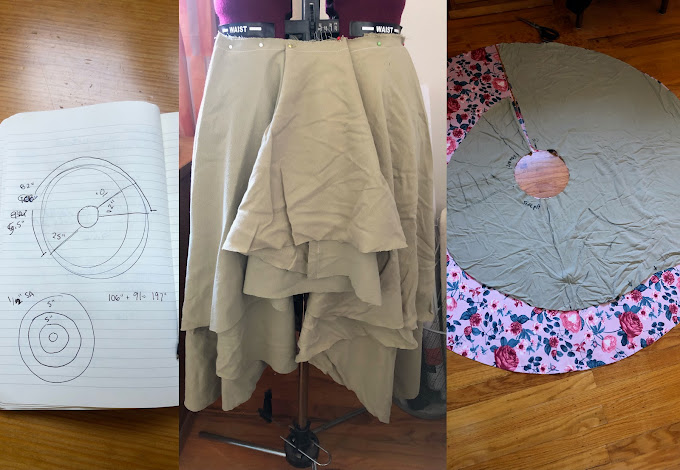Fabric: swimwear fabrics from Blue Moon Fabrics
Cost: $75 for all three suits
Cost: $75 for all three suits
Pattern: BurdaStyle Bandeau Top 05/2014
This was one of my first successful swim tops, after about five years of sewing them. While the pattern directions are sparse and typical of Burda, I had less trouble with them time around. As with last time, I added swim cups which give a really nice shape. I believe the original has normal straps, while this has a halter. It's not designed for lots of surf and waves, but feels fairly secure (as worn in the kayak, below).
The bottoms are another TNT pattern - a simple front and back with a high cut. This time I also added a waistband. I also drafted a low-waist one with leftover fabric (not pictured), though those didn't feel very secure so might not work out.
The next one I first made in 2016.
Pattern: Madalynne Sierra Bra (a free pattern!)
This one comes together fairly quickly, with a few modifications including completely lining it. Last time I made it I drafted the halter strap as one piece with the top. This time I did not (in order to make it easier to line), but didn't have the cleanest results. Regardless, this is an easy style for me to wear and gives a good shape.
Same bottoms as before. I had originally tried the Edgewater Ave Oakley Bottoms, but realllly don't like high cut legs on me. As with the other, this also had a low-cut version with the leftover fabric (not pictured) that worked out fairly well.
Finally, I tried one new-to-me pattern that I really liked.

Pattern: Luciolons Cassis swimsuit (maillot de bain Cassis)
Someone on Reddit described this suit as their dream pattern and I have to agree! I love that it is covered up but still shows a bit of skin. It's got something very French about it. I actually worried that the top would provide too little coverage with the low cut and the cut-outs under the boobs. I do not recommend if you are more endowed. That said, I really enjoyed it and it worked out well on me. I takes a little fiddling with the straps when I put it on but then stays in place.
As I looked up bathing suit bottoms online, one thing I had trouble with was getting a good idea of how cheeky the backs were cut. Several patterns out there have multiple options cuts, but often don't identify in the photos which is which. The same goes for people's posts on Instagram. And many don't post pics of the backs at all which is... understandable. So here's my contribution to the internet: this is the cheekier of the two options.
I'm back home from the delightful warm weather now, but it's finally starting to heat up at home. I'm fully restocked ready for summer!






























